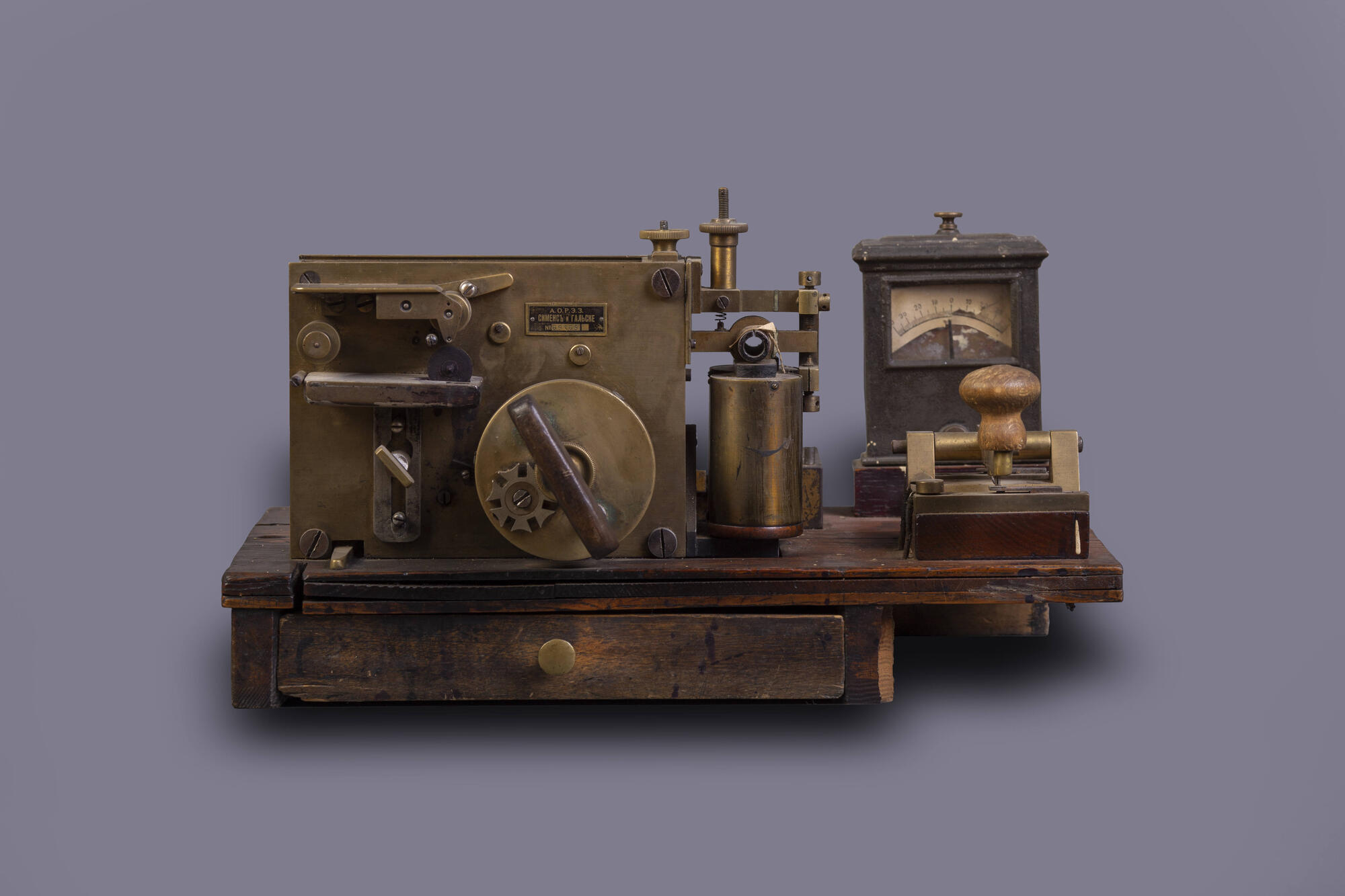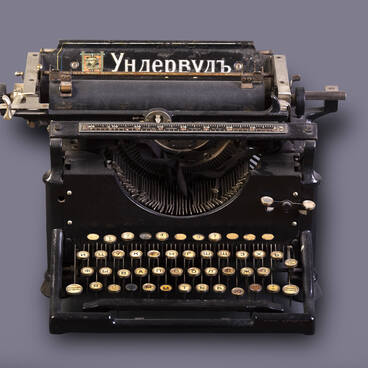The telegraph, in its various forms, is the oldest means of communication. Telegraph devices played a major role in the development of modern society. Following the discovery of electricity, and in particular the remarkable research of Danish scientist Hans Christian Ørsted and Italian scientist Alessandro Volta, a host of ideas emerged as to how the electromagnetic telegraph could be engineered.
Attempts to manufacture electrical devices that transmit signals over a certain distance were made since the late 18th century. In 1774 the simplest telegraph device was built in Geneva, Switzerland by the scientist and inventor Le Sage. All the early telegraph machines with dial indicators and magnetic hands had a significant drawback — they could not be stabilized: when information was transmitted quickly, errors occurred and the text came out distorted. The American artist and inventor Samuel Morse succeeded in creating a simple and reliable two-wire telegraphic communication circuit.
The Morse telegraph machine is very simple. A key (manipulator) is used to short-circuit and interrupt the current. It consists of a lever made of metal, the axis of which is connected to a line wire. One end of the manipulator lever is pressed by a spring to a metal projection connected by a wire to the receiving device and to the ground (grounding is used). When the telegrapher presses the other end of the lever arm, it touches another projection connected by a wire to the battery. At this point the current rushes down the line to the receiving device located elsewhere. For the time the electric current signal passes through the receiving telegraph, an electromagnet attracts an armature, with which a metal wheel is rigidly connected to the writing wheel (dipped in the inkpot). The wheel leaves a trace of ink on the paper tape, which is pulled through a spring mechanism.
The Morse telegraph displayed in the Stary Oskol Museum of Local Lore has the factory number 69169. This machine was used by the Stary Oskol post office. It was used to receive telegrams about the October Revolution in Petrograd and the first decrees of the Soviet government.
Attempts to manufacture electrical devices that transmit signals over a certain distance were made since the late 18th century. In 1774 the simplest telegraph device was built in Geneva, Switzerland by the scientist and inventor Le Sage. All the early telegraph machines with dial indicators and magnetic hands had a significant drawback — they could not be stabilized: when information was transmitted quickly, errors occurred and the text came out distorted. The American artist and inventor Samuel Morse succeeded in creating a simple and reliable two-wire telegraphic communication circuit.
The Morse telegraph machine is very simple. A key (manipulator) is used to short-circuit and interrupt the current. It consists of a lever made of metal, the axis of which is connected to a line wire. One end of the manipulator lever is pressed by a spring to a metal projection connected by a wire to the receiving device and to the ground (grounding is used). When the telegrapher presses the other end of the lever arm, it touches another projection connected by a wire to the battery. At this point the current rushes down the line to the receiving device located elsewhere. For the time the electric current signal passes through the receiving telegraph, an electromagnet attracts an armature, with which a metal wheel is rigidly connected to the writing wheel (dipped in the inkpot). The wheel leaves a trace of ink on the paper tape, which is pulled through a spring mechanism.
The Morse telegraph displayed in the Stary Oskol Museum of Local Lore has the factory number 69169. This machine was used by the Stary Oskol post office. It was used to receive telegrams about the October Revolution in Petrograd and the first decrees of the Soviet government.





